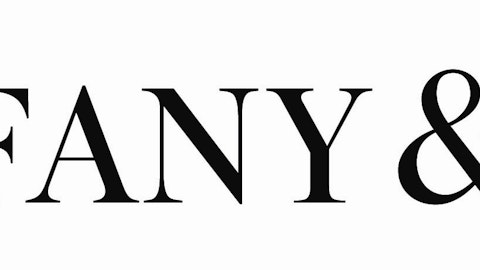Luxury retail is one of the most remarkable sub-sectors in the market today. Forecasters often predict that demand for high-priced goods will fall during times of economic hardship, but current data shows that wealthy consumers will purchase their premium goods during good and bad times.
While this logic may seem counterintuitive, hard evidence confirms its validity. At the moment, the success of luxury retail in London, combined with a national consumer crisis throughout the U.K., serves as a case-in-point. Outside of the British capital, the English consumer remains cautious with unemployment at multi-year highs and the growth of Internet retail harming the economy.
On a broader level, luxury retail is strong in Europe’s largest cities despite the prolonged Eurozone recession. Here in the U.S., a similar story can be told. Sales of luxury goods are the strongest ever as wealthy buyers have benefited from rising home values and stock prices.
What’s the best way to play the long-term trend in luxury retail, and are there any hidden opportunities?
Consider Vera Bradley, Inc. (NASDAQ:VRA), a functional accessories designer for women that went public in October 2010. The luxury retailer has frustrated long-term investors with its inconsistent quarterly results, management changes, and unclear vision for its premium handbags. As competitors such as Coach, Inc. (NYSE:COH) unveil the latest trends, retail analysts have criticized Vera Bradley, Inc. (NASDAQ:VRA)’s marketing team on merchandising decisions and new product development.
On June 5, Vera Bradley, Inc. (NASDAQ:VRA) provided disappointing Q1 2014 results and weak guidance for fiscal year 2014. The company lowered its 2014 earnings forecast to $1.74–$1.78 vs. the consensus of $1.81. Chief executive Mike Ray also announced that he will retire from the company once a search committee finds a replacement. All in all, Vera Bradley, Inc. (NASDAQ:VRA) reported a “kitchen sink” quarter — providing a full plate of negativity to investors in one sitting.
Shares are now down 60% from the post-IPO highs. Yet, despite investor pessimism, a number of long-term positives could propel the stock higher. Here are five reasons why I believe Vera Bradley, Inc. (NASDAQ:VRA) is an attractive turnaround candidate for the next 12 months:
1). The stock is valued at 11.5x new earnings guidance of $1.74-$1.78, a discounted multiple compared to the industry average of 23x earnings for luxury goods makers. The market is assigning it a low multiple due to perceived uncertainty, but management should meet the new guidance with strong revenues from company-owned stores and online sales.
2). Sales revenue has more than doubled in the last five years from $239 million to $541 million. Net income has nearly tripled, growing from $24 million in fiscal 2009 to $69 million in fiscal 2013.
3). Online sales growth was a strong point in first quarter results with a 22% increase. Direct segment revenues grew 24% as a whole. Company-owned stores continue to perform well, and the 19 full-price and four outlet stores opened in the last 12 months should boost future results.
4). The potential for an upside surprise exists if the board of directors is able to bring in the right leader as CEO. The company’s co-founder, chief financial officer, and chief executive have all retired or resigned in the last year, making Vera Bradley an attractive target for a self-starter exec with leadership capabilities.
5). Wall Street is cautiously optimistic on Vera Bradley following Q1 results and the CEO resignation. Analysts at Sterne Agee upgraded the stock to “neutral” from “underperform” based on valuation. New York-based Jefferies is bullish, and reiterated a buy rating and a $34 price target.
Turnaround in a growing industry
Recent strong results from luxury goods competitors indicate that Vera Bradley’s re-organization is based on company-specific issues and not secular ones. Readers should view this as a positive as it’s easier to hire a new CEO to sell a high-demand product versus a fabulous CEO tasked with a fading brand.






